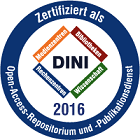Liu, Ting: Large-scale omics-based assessments of aging trajectories in flies and mice. - Bonn, 2025. - Dissertation, Rheinische Friedrich-Wilhelms-Universität Bonn.
Online-Ausgabe in bonndoc: https://nbn-resolving.org/urn:nbn:de:hbz:5-80445
Online-Ausgabe in bonndoc: https://nbn-resolving.org/urn:nbn:de:hbz:5-80445
@phdthesis{handle:20.500.11811/12723,
urn: https://nbn-resolving.org/urn:nbn:de:hbz:5-80445,
author = {{Ting Liu}},
title = {Large-scale omics-based assessments of aging trajectories in flies and mice},
school = {Rheinische Friedrich-Wilhelms-Universität Bonn},
year = 2025,
month = jan,
note = {The significant increase in life expectancy over the past two centuries can be attributed to advancements in public health, including improved sanitation, access to clean drinking water, widespread immunization, and the development of antibiotics. However, the expansion of human lifespan has led to a rise in chronic diseases typically linked to advanced age, thus shifting the burden of illness to later stages of life. The hallmarks of aging encompass biological processes such as genomic instability, telomere attrition, epigenetic alterations, and several factors. Conventional methods of measuring aging, like relying on lifespan as a proxy for aging, are not sufficient to sufficiently address the complex nature of aging. Therefore, it is necessary to adopt a more comprehensive approach that takes into account the many facets of aging and age-dependent change in physiological function. This thesis utilizes proteomics and transcriptomics to uncover a specific set of age-sensitive biomarkers and investigate their dynamic expression patterns. The research is organized into three interrelated chapters: the first chapter examines the proteomic landscape of normal aging across mouse tissues, the second chapter investigates genetic expression patterns associated with the stabilization of mortality in late life, and the third chapter explores the effects of environmental temperature on aging.
Our findings reveal distinct age-dependent proteomic changes across various organs, emphasizing the dynamic and organ-specific nature of aging. The identification of ASPs and their unique expression patterns provides deeper insights into the molecular mechanisms of aging, with implications for potential biomarkers of age-related diseases. Additionally, the study of Drosophila melanogaster demonstrates a stabilization phase in gene expression associated with a mortality plateau, suggesting biological mechanisms that limit further aging-related deterioration. This phenomenon is further validated by the evaluation of GFP reporter line-Drosomycin as one of the ASGs, offering a deeper perspective on plateau phase at the individual level. To ensure this is a convincing finding, more investigations into the GFP reporter lines are ongoing. Lastly, our investigation into the effects of ambient temperature on lifespan highlights the enduring influence of environmental factors, with transient exposure to low temperature extending lifespan and improving motor performance in later life stages. As previously said, lifespan is not an accurate proxy of aging due to its susceptibility to age-related pathologies like cancer. Proteome analysis will be conducted to evaluate the effect of transient exposure to low temperature on aging extending beyond the lifespan. In summary, this thesis improves our comprehension of age-dependent changes in the multi-omics profiles over time, shedding light on the nature of the aging progress. These findings provide a solid foundation for future studies that aim to understand a wide range of molecular processes involved in aging and find ways to support healthy aging and examine the effect of potential anti-aging therapies on age-related illnesses.},
url = {https://hdl.handle.net/20.500.11811/12723}
}
urn: https://nbn-resolving.org/urn:nbn:de:hbz:5-80445,
author = {{Ting Liu}},
title = {Large-scale omics-based assessments of aging trajectories in flies and mice},
school = {Rheinische Friedrich-Wilhelms-Universität Bonn},
year = 2025,
month = jan,
note = {The significant increase in life expectancy over the past two centuries can be attributed to advancements in public health, including improved sanitation, access to clean drinking water, widespread immunization, and the development of antibiotics. However, the expansion of human lifespan has led to a rise in chronic diseases typically linked to advanced age, thus shifting the burden of illness to later stages of life. The hallmarks of aging encompass biological processes such as genomic instability, telomere attrition, epigenetic alterations, and several factors. Conventional methods of measuring aging, like relying on lifespan as a proxy for aging, are not sufficient to sufficiently address the complex nature of aging. Therefore, it is necessary to adopt a more comprehensive approach that takes into account the many facets of aging and age-dependent change in physiological function. This thesis utilizes proteomics and transcriptomics to uncover a specific set of age-sensitive biomarkers and investigate their dynamic expression patterns. The research is organized into three interrelated chapters: the first chapter examines the proteomic landscape of normal aging across mouse tissues, the second chapter investigates genetic expression patterns associated with the stabilization of mortality in late life, and the third chapter explores the effects of environmental temperature on aging.
Our findings reveal distinct age-dependent proteomic changes across various organs, emphasizing the dynamic and organ-specific nature of aging. The identification of ASPs and their unique expression patterns provides deeper insights into the molecular mechanisms of aging, with implications for potential biomarkers of age-related diseases. Additionally, the study of Drosophila melanogaster demonstrates a stabilization phase in gene expression associated with a mortality plateau, suggesting biological mechanisms that limit further aging-related deterioration. This phenomenon is further validated by the evaluation of GFP reporter line-Drosomycin as one of the ASGs, offering a deeper perspective on plateau phase at the individual level. To ensure this is a convincing finding, more investigations into the GFP reporter lines are ongoing. Lastly, our investigation into the effects of ambient temperature on lifespan highlights the enduring influence of environmental factors, with transient exposure to low temperature extending lifespan and improving motor performance in later life stages. As previously said, lifespan is not an accurate proxy of aging due to its susceptibility to age-related pathologies like cancer. Proteome analysis will be conducted to evaluate the effect of transient exposure to low temperature on aging extending beyond the lifespan. In summary, this thesis improves our comprehension of age-dependent changes in the multi-omics profiles over time, shedding light on the nature of the aging progress. These findings provide a solid foundation for future studies that aim to understand a wide range of molecular processes involved in aging and find ways to support healthy aging and examine the effect of potential anti-aging therapies on age-related illnesses.},
url = {https://hdl.handle.net/20.500.11811/12723}
}





